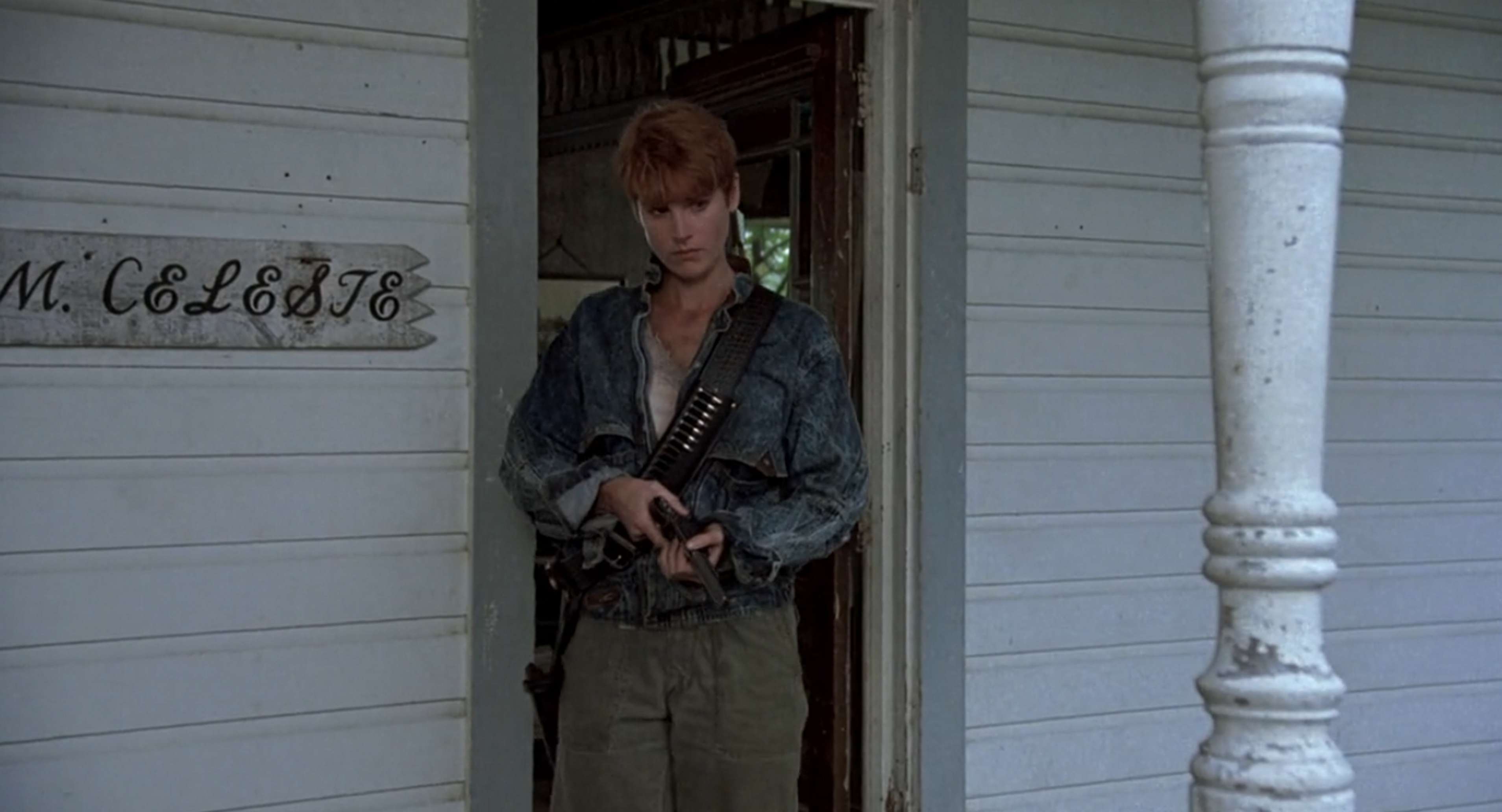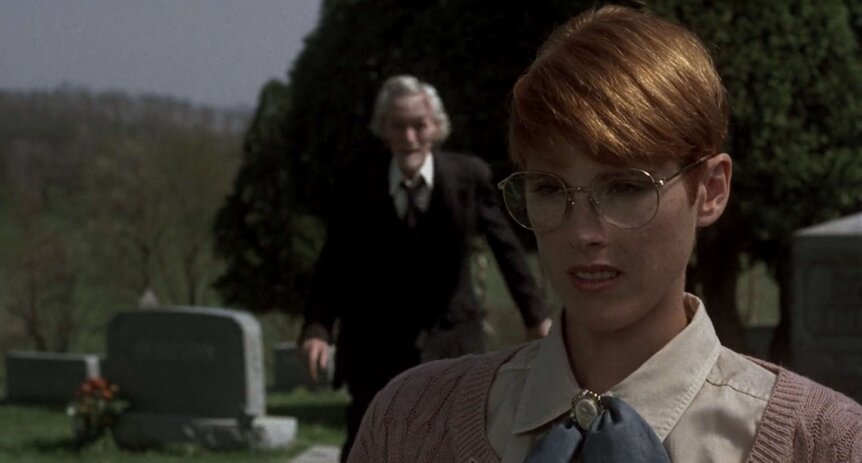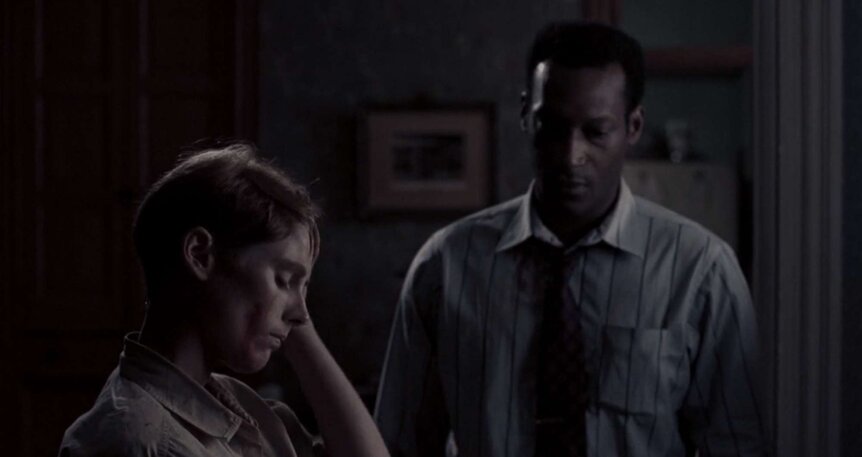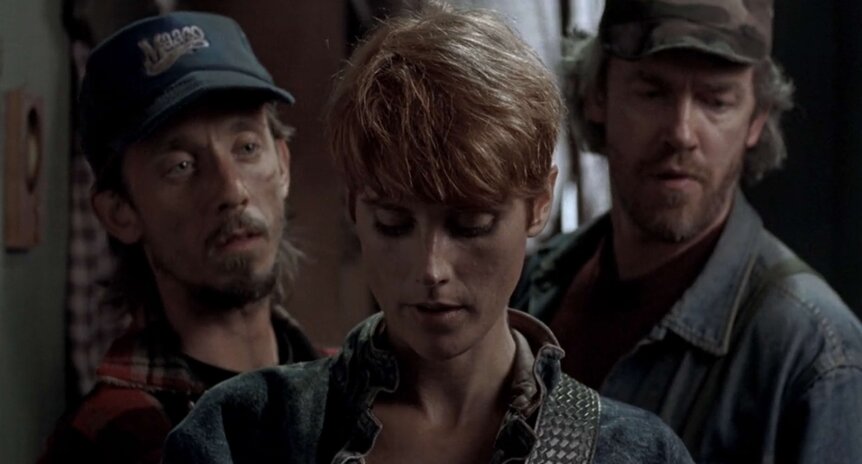Create a free profile to get unlimited access to exclusive videos, sweepstakes, and more!
How 1990's Night of the Living Dead remake reimagined Barbara

The original Night of the Living Dead is considered far and wide to be a classic of the genre, and one of the earliest examples of a film that bombed in its theatrical run only to go on to gain a massive cult following as a midnight movie. A horror film with a Black lead, commentary on racism in late ‘60s rural America, and topped off with what was at the time some of the most graphic gore ever to appear on the screen may not have been palatable for the general moviegoing public on its release, but there's no denying its impact over the decades. Regardless, there was simply no other film even remotely like it in 1968, and its sheer individuality played no small part in what made it so unforgettable.
Then there's the 1990 remake, which was in its moment widely regarded as a "cynical cash grab" by audiences. George Romero, the man who had helmed the original film, rewrote the script he'd originally written with John Russo. Russo became a producer, and longtime Romero collaborator Tom Savini took over directing duties. Romero spent much of the time off-set, and Savini was left to engage in battles with corporate executives who had a different vision for the film than he did. This remake was admittedly created by people who had spent several years in debt over their groundbreaking movie and were afraid that someone else would jump in and get paid for a remake to boot. Yet, it did make a few interesting changes — one of which was its reimagining of Barbara.
In the 1968 version of Night of the Living Dead, Barbara goes to the cemetery to visit her mother's grave with her insufferable brother Johnny, who resents the time it takes from his apparently riveting life and teases her throughout the opening scene with his famous line, "They're coming to get you, Barbara!" Barbara barely survives a zombie attack that sees her brother dead and flees to a nearby farmhouse. This is where she meets Ben, the film's protagonist, who helps her keep her cool and tries to turn the house into a small fortress in hopes of lasting through the night. Other characters show up, including well-meaning teens Tom and Judy and the much less well-meaning Harry Cooper, along with his wife Helen and soon-to-be-zombified daughter.
From the beginning, Night of the Living Dead took zombies out of the realm of the mystical and placed them squarely into the world of social commentary. Harry Cooper represents me-first American individualism, and he thwarts the others' essentially socialist attempts to survive throughout the night together, playing no small role in their deaths when his constant, time-wasting debating costs them their chance to survive. At the end, when Ben calls to a gang of rifle-toting white men after surviving the night against all odds and their response is to immediately shoot him, one can't help but wonder if this would have been their response to a white survivor. The follow-up gives Ben a different ending altogether and it could be argued that it becomes less relevant in the retelling, but there is something noteworthy that in this rendition as well as the first, we have a white man yelling in the face of a Black man, refusing to help because he's decided with no solid evidence that Ben can't possibly know what he's talking about. Though the zombies serve as the motivating factor, these racial overtones are the most essential elements of the story.
The original Ben was portrayed by the great Duane Jones, who would later direct the incredible vampire film Ganja & Hess, while the new version gave us Tony Todd in the role. Todd is an indisputable genre king, and his take on Ben gives the remake life that it may not have had otherwise. Meanwhile, actor and stuntwoman Patricia Tallman was brought in to portray a new Barbara. Tallman has a significantly different screen presence, and her obvious capabilities make the first scene of her haplessly fumbling around a graveyard a little hard to believe. Yet, the movie quickly catches up to her and soon we see a completely new take on the character. The interactions between Barbara and Ben become a new highlight for the story. In the original movie, Barbara served as more an exercise for Ben's patience than an ally against the zombie hordes. Here, Barbara listens, observes, and offers her help to Ben. Though the chaotic events of the film still unfold against Ben's favor, he finally has a genuinely helpful and level-headed accomplice in Barbara.
The original movie had Barbara suffering from acute shock and unable to act beyond a few shrieks, save one admirable moment of heroism that unfortunately ends in her death, but this take adheres to a newer world of horror in which final girls had become the norm. It doesn't offer much to the trope overall, but it is a lot easier to watch Barbara thinking her way out of problems rather than flailing helplessly throughout the events that befall her. Ben does still perish, but Barbara shoots Harry Cooper due to his involvement in Ben's death, giving viewers at least some slight sense of catharsis.
By the end of the film, Barbara has lost her faith in humanity. As she watches a crowd torment and torture zombies they have captured, she murmurs, "They're us. We're them and they're us," which is a literal read of the original film's intentions two decades after the fact. Where Barbara goes from here, it's hard to say, but her sense of defiant anger over the injustice done to Ben and the horror she herself had lived through might give audiences a tangible counterpart to their own feelings. Turning Barbara into a gun-toting badass might seem a bit condescending in its own right looking back, but there's no denying that it's a better turn to take than simply replicating her role in the original.
After this remake, the character of Barbara went on to feature in a number of noncanonical comic books, including Barbara's Zombie Chronicles. In this series, she appears much as a continuation of the take we see on her here, but her appearance is hypersexualized and we miss out on some of the nuances that went into her portrayal. Tough-as-nails female protagonists are easily used to make some fairly anti-feminist statements in art, and sadly, Barbara's transformation led to some pretty weird choices in the non-affiliated comic adaptations. Still, even though Barbara's existence as a character has been fairly rocky, Tallman's take buoyed the 1990 remake and gave us more character development from her and Ben both through their on-screen interactions, making it ultimately hard to dismiss the remake as pointless.





























